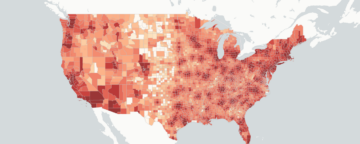Only a subset of teens who engage in excessive levels of impulsive behavior, such as acting without thinking, later struggle with addictions or other problem behaviors, a new study has found.
The study, published last month in the Journal of Youth and Adolescence, found that children who struggle with weak cognitive control at a young age are most at risk for trouble in adulthood following their engagement in risk-taking activities in adolescence.
The study, by researchers at the University of Oregon, the Annenberg Public Policy Center (APPC) of the University of Pennsylvania, and the Children’s Hospital of Philadelphia, challenges the traditional “imbalance models,” which theorize that adolescence is a universal time of brain imbalance. Those models propose that teenagers lack impulse control because of delayed brain development, and without that cognitive development are driven to take risks to get instant rewards.
“People have heard so much about the teenage brain being all gas and no brakes, stemming from an imbalance between the reward and control regions of the brain,” said lead author Atika Khurana of the University of Oregon. “This study shows that this is not true. There is an imbalance for some youth, but it is not universal.”
“This paper is a validation of our critique of the imbalance models,” said co-author and APPC research director Dan Romer. “It shows that only a subset of young people are at risk for problems associated with poor impulse control.”
The study supports an alternative model proposed by Romer and the other researchers called the Lifespan Wisdom Model. Their model says that much of what is considered teen risk-taking is instead a normal part of development, in which teens are driven to gain the experience required to assume adult roles and behaviors. Their model differentiates between “adaptive/exploratory risk taking” and “maladaptive forms of risk-taking” the latter of which are characterized by poor impulse control.
The study, funded by the National Institutes of Health, is based on an analysis of six waves of data gathered from 387 adolescents, ages 11 to 18, in the Philadelphia area collected through the Philadelphia Trajectory Study.
“Previous studies modeling changes in impulsivity and sensation seeking during adolescence drew conclusions based on age differences without looking at the same adolescents over time as they developed,” said Khurana, associate professor of prevention science and director of graduate programs in prevention science at the University of Oregon. “This study looked at individual trajectories and captured distinct patterns of change that were not otherwise observable when looking at youth at different ages.”
Khurana, also a distinguished research fellow at APPC, began collaborating with Romer and working with this data as a postdoctoral fellow at APPC. The other co-authors are Laura M. Betancourt and Hallam Hurt of the Children’s Hospital of Philadelphia.
To learn more about the study, read the news release from the University of Oregon. To reach the study in the Journal of Youth and Adolescence, click here.

